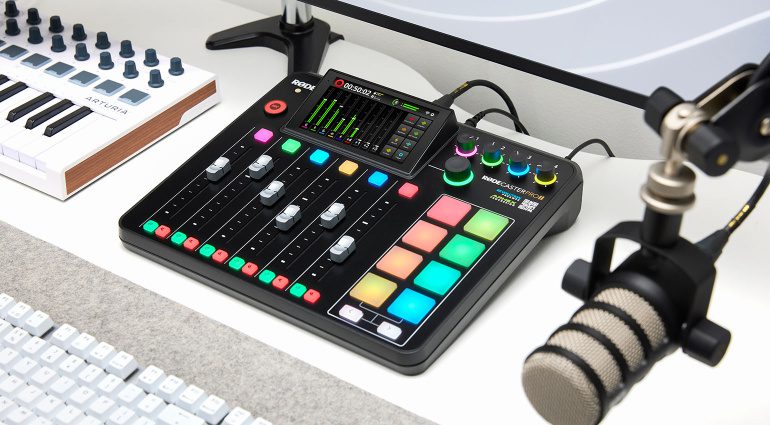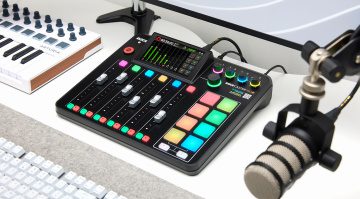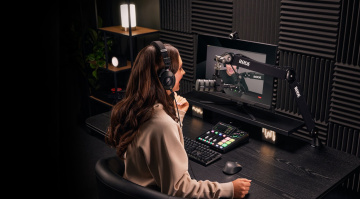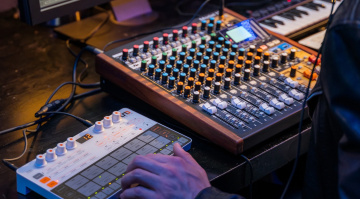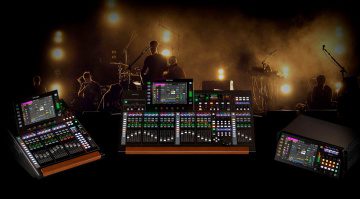The Best Podcast Mixers for Any Budget
Mixers for Streaming, Podcasting, and Content Creation.
So, you’re looking to invest in a new device for your podcast or live stream. The market is bursting with digital mixers, interfaces, and boxes that may serve your needs. Some are designed specifically for podcasting and streaming. But what should you be looking for? Vast channel counts, complex routing options, or boutique effects are not absolutely necessary here. Instead, your device should be compact and fit on the desk in front of you. It should also offer USB connectivity, so you don’t need an additional audio interface. Bearing those criteria in mind, we’ve compiled a list of some of the best podcast mixers at different price points.
Note: This article by Julian Schmauch was originally published in German on gearnews.de and has been adapted for gearnews.com.
In this Article:
The Best Podcast Mixers: What do you need?
First, it’s important to get a clear picture of what you need the mixer to do. If you only want to record your voice, you might not need one – a USB microphone might be enough. If there’s more than one audio source and you want to control volume and audio effects externally, on the other hand, a small mixer makes sense. Also, when streaming a live gig or podcasting with multiple hosts or guests, multiple headphone jacks with individual volume controls are an advantage. Furthermore, the mixer should have a USB port for direct connection to the computer, which eliminates the need for an audio interface.
Time to determine the amount and type of signal inputs you need. That depends on your specific application and sound sources. Most mixers offer a selection of XLR inputs and 1/4” jack inputs (balanced and/or unbalanced) in varying configurations. A source (microphone) goes into a channel via a cable. For podcasting, the number of hosts and guests (e.g., the total number of microphones) determines the number of mic inputs that you’ll need. Live streaming also uses one microphone and thus one mono channel for almost every source. If you’re using condenser mics, don’t forget about phantom power! Ideally, this can be switched on individually per channel.
If you want to connect your electric guitar or other instruments directly, you’ll also need 1/4” TS (tip-sleeve, “mono plug”) or TRS (tip-ring-sleeve, “stereo plug”) input. Instruments like electronic drums or keyboards are also most often connected to 1/4” inputs, as are other line level sound sources like external audio players. For these sources, which usually have stereo outputs, your mixer should be equipped with the appropriate number of stereo inputs. Alternatively, you can use two adjacent mono channels. For small adjustments of the signals, if they sound dull or too sharp, there should also be an equalizer per channel.
Now let’s take a look at the various solutions available:
The Best Podcast Mixers: Behringer Xenyx 502S
Small, smaller, 502S! This compact mixer from Behringer offers an XLR input and two stereo inputs – it’s the cheapest mixer in this list. It’s ideal for solo podcasters and single musicians on a tight budget. For example, you can connect an electronic piano and an electronic drum set to the two stereo inputs.
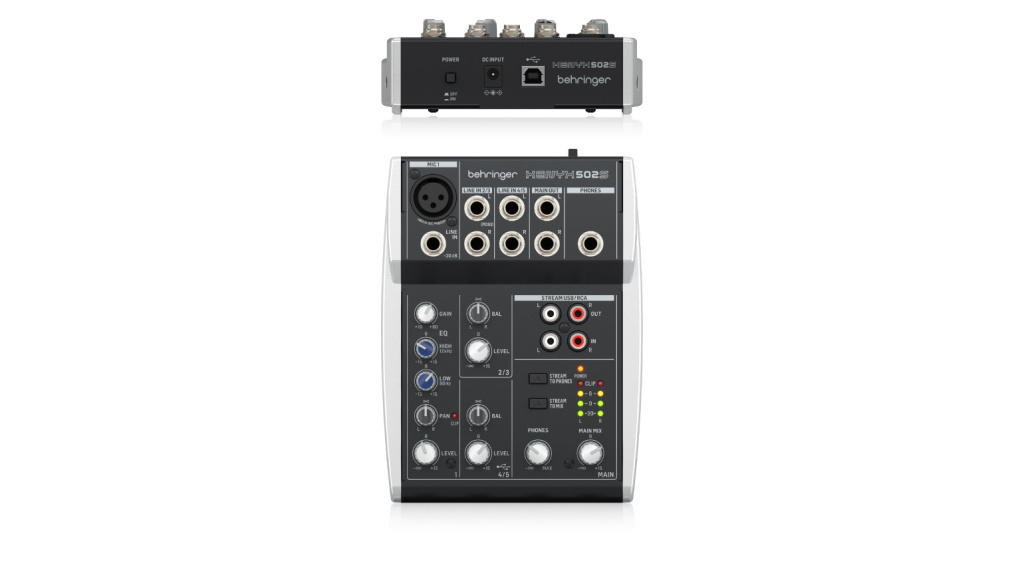
Provided you have an XLR-to-1/4” adapter, you can also connect a second microphone. If you feed a mono signal into channel 2/3 or channel 4/5, there’s a balance pot for each pair. You can use these to set whether you want to listen to input 2 or input 3 on channel 2/3, for example. The 502S also has a stereo RCA input to connect your home stereo system or a DJ mixer, for example. The analog outputs include a stereo output, a headphone output, and an RCA output, which gives you many options for connecting your monitors.
The 502S connects via USB 2.0 and is automatically recognized as an audio interface by Windows and Mac systems. The XLR channel offers switchable +48V/+15V phantom power. The 2-band EQ helps to get rid of low-end rumble and other unwanted background noise. Obviously, this is a low-cost solution to get you started if you’re on a very tight budget and don’t often need to use multiple microphones. Get it at Thomann.*

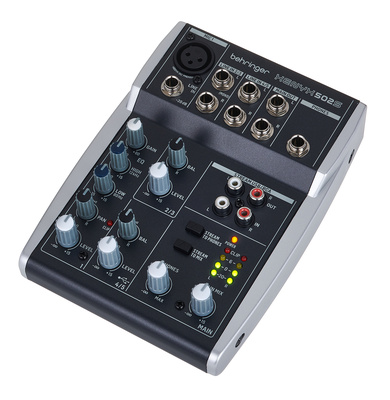
The Best Podcast Mixers: Yamaha AG06 MK2
The compact mixers from Yamaha come in a rather chic housing in black or white. This mixer has a total of six inputs. Channels 1 and 2 are XLR/jack combo inputs. Channel 2 has an additional “Guitar” option for compatibility with higher impedances, letting you plug in an electric guitar directly.
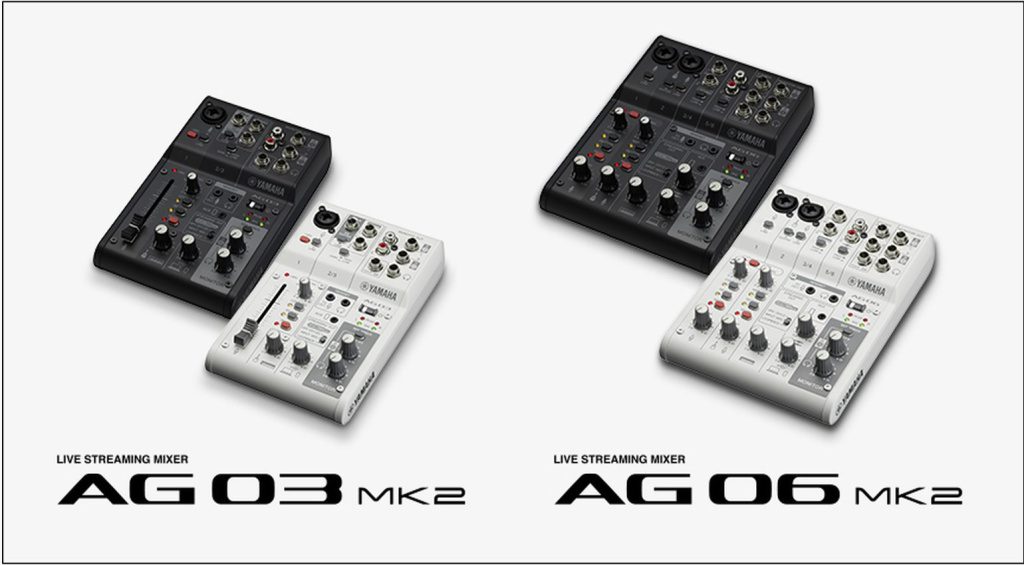
You can also activate an amp simulation on the same channel at the push of a button. This makes the AG06 equally suited to podcast conversations or live-stream concerts. A stereo signal can be fed into channels 3 and 4 via jack inputs. The RCA connections on Channels 5 and 6 feed in signals from the home stereo system or CD player.
On the output side, you’re getting a stereo output, a stereo monitor output, and two headphone outputs. A headset including a microphone can be connected to the second headphone output via 3.5 mm jack. The AG06 converts at up to 192 kHz sampling rate and 24-bit resolution. Overall, there’s quite a lot of functionality on offer here that’s useful for podcasting and streaming. Get it at Thomann.*

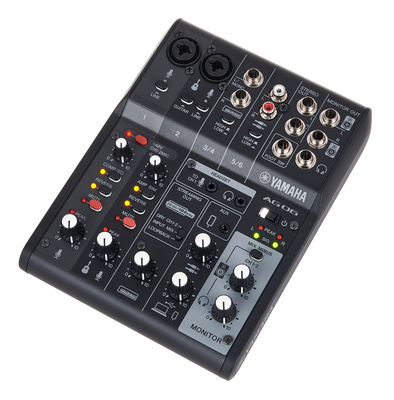

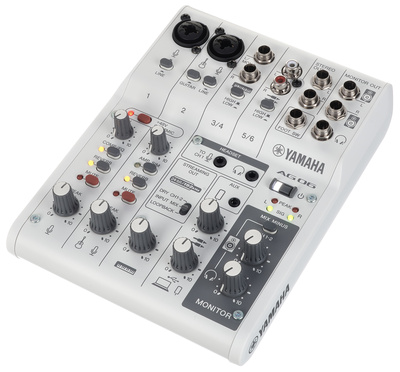

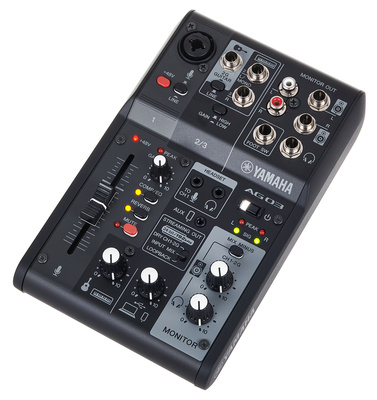

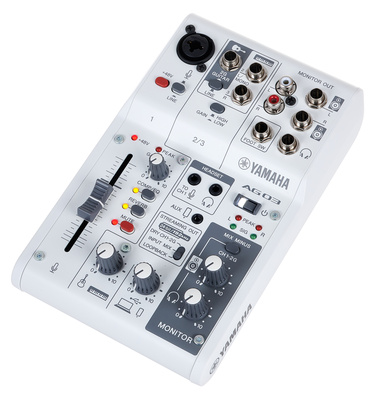



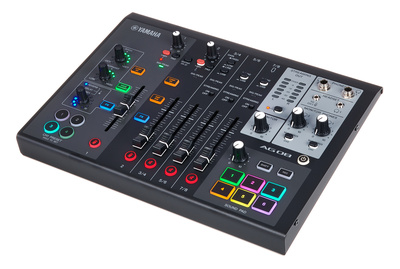

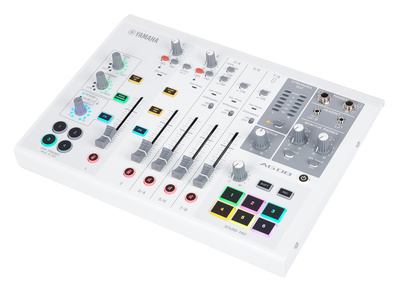
The Best Podcast Mixers: Behringer Flow 8
Compared to Behringer’s Xenyx mixer above, the Flow 8 is in a different class in terms of features for streaming and podcasts. Ten inputs are available here: Eight inputs as XLR, two XLR/jack combo connectors, and a choice of four mono or two stereo jack inputs.
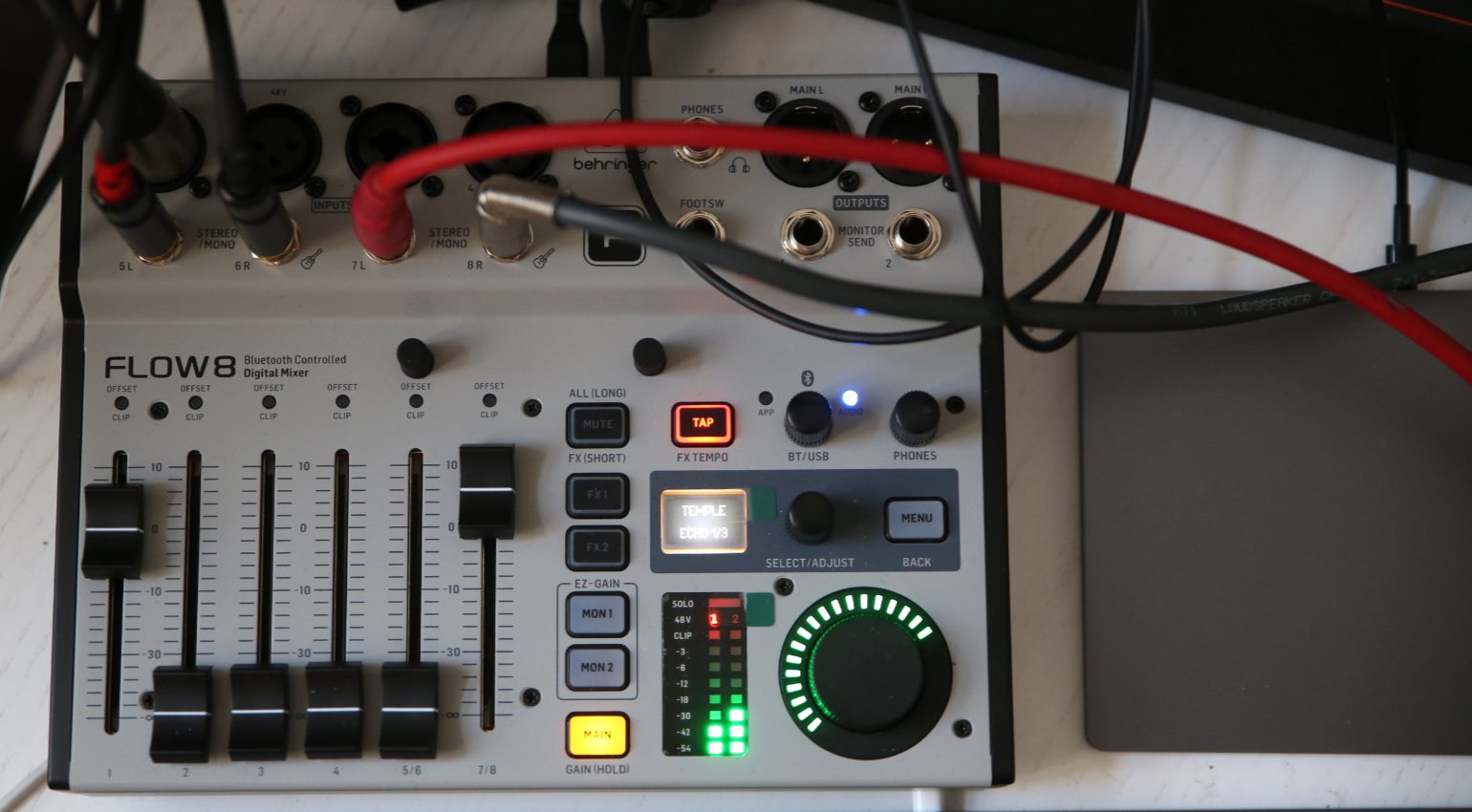
Custom EQ settings and compressor settings can be selected for each channel. These are set via Behringer’s Flow Control app, as are the sixteen included effects. On the output side, the Flow 8 provides an XLR-out stereo pair and a stereo headphone output with a 6.3mm jack connection. Bluetooth connectivity is supported, too, letting you integrate audio via a wireless signal from a smartphone or tablet.
The Flow 8 converts at 24-bit, with a 48 kHz sampling rate. If you want to use it without a computer or power connection, you can plug in a suitable power bank. Otherwise, the Flow 8 is connected to your computer via USB 2.0. You can also connect a second Flow 8 in series for sixteen channels – that’s enough to live stream a small band! Get it at Thomann.*

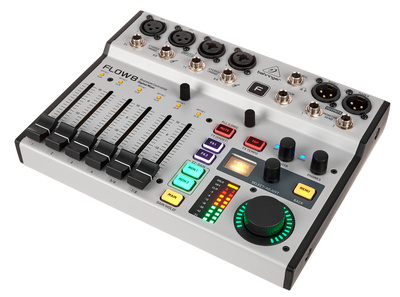
The Best Podcast Mixers: Zoom PodTrak P8
Field recording specialists Zoom offer the PodTrak P8, a mixer that’s ideal for podcasts and live streaming from home. Six XLR inputs with individually switchable phantom power are enough for a panel discussion or small band session. The colour LCD touchscreen allows quick access to routing options and effects.
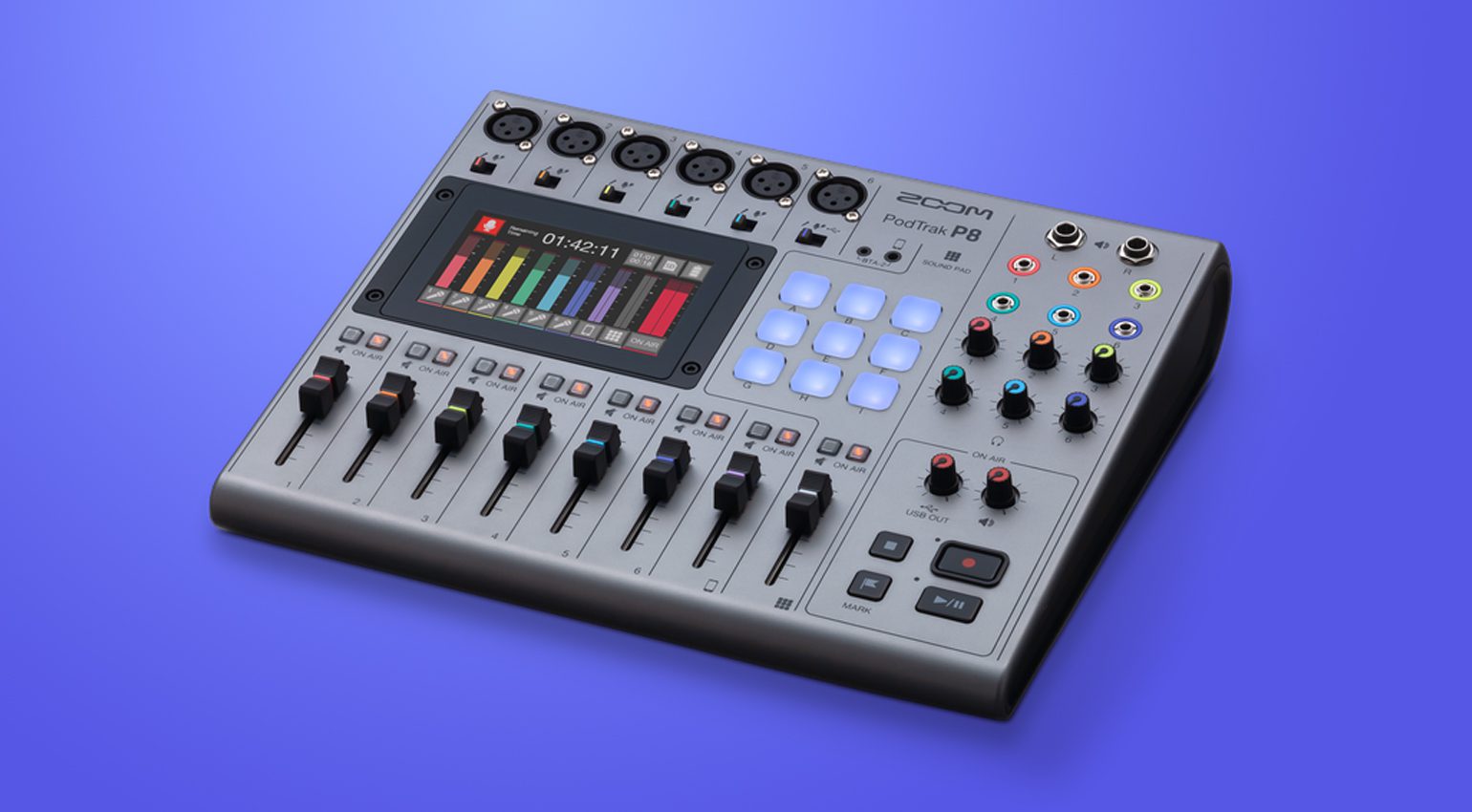
There’s also a dedicated channel for recording telephone interviews, which could come in very handy. Zoom has included a “Mix Minus” function that prevents annoying echoes or whistling feedback from the person you’re talking to if they’ve turned your stream up too loud on their end. The PodTrak 8 not only has six inputs, but also six headphone outputs via 3.5 mm jack. The volume can be set individually for each output. Get it at Thomann.*
Nine assignable sound pads are provided, with a total of four sound banks. So you can load up to 36 sounds on the mixer and trigger them with the pads. 13 sounds come pre-installed, like laughs or applause. The mixer is class-compliant, too, so it can be used on Windows and Mac computers, as well as with iOS devices without additional drivers. It supports SD, SDHC, and SDXC memory cards with up to 512 GB capacity to record your podcasts to. If you want similar features in a smaller version, be sure to check out the other models in the PodTrak family.

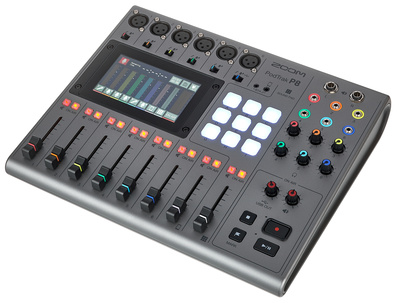



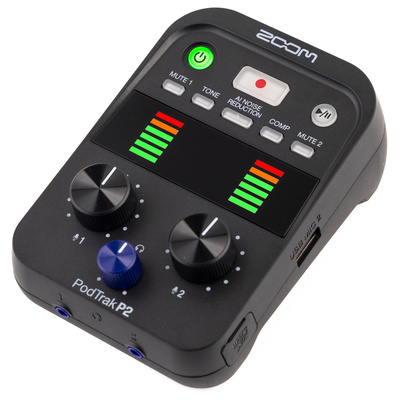
The Best Podcast Mixers: TC-Helicon GO XLR
The TC-Helicon GO XLR is a desktop audio interface designed specifically for gamers and streamers on the Windows platform. As a digital mixer, the GO XLR provides you with four channels that can be assigned to the mic preamp input, background music, monitoring the chat sound fx, and your system sounds, where the game audio comes through.
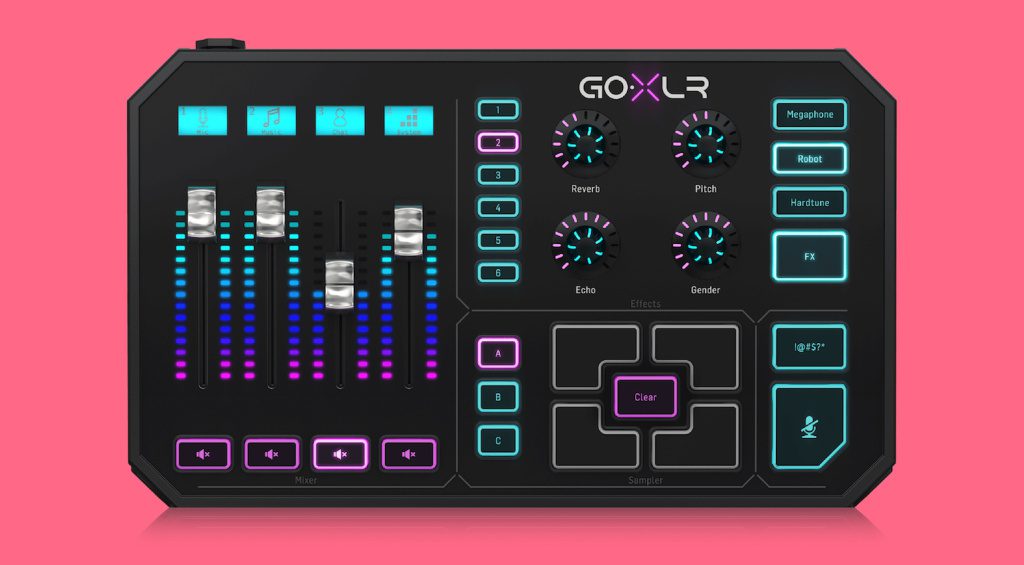
To entertain your audience and the other players, there is a range of TC-Helicon vocal effects that you can use to change your voice to get into character and add drama to anything going on in the game. Also, there are three banks of four sample trigger buttons that you can use to capture sounds on the fly or import specific effects from your collection. Get it at Thomann.*
The GO XLR also features motorized faders and an optical S/PDIF audio input for Xbox and PlayStation consoles. Overall, the GO XLR provides a great interactive streaming management system at a great price, and you can also check out the smaller GO XLR mini with a more basic set of features.
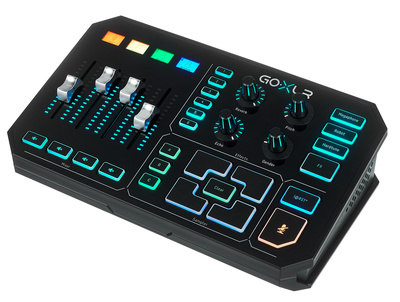
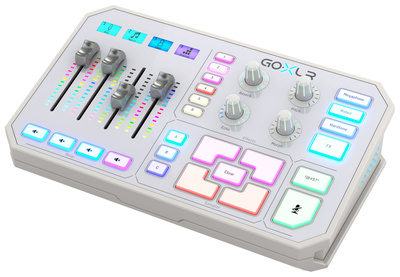
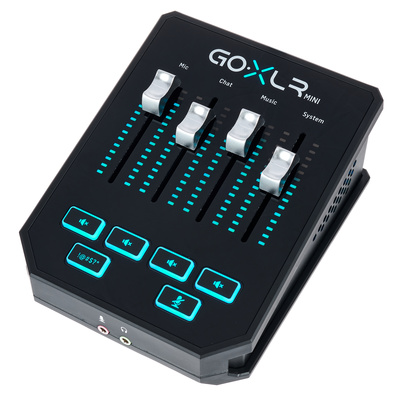
The Best Podcast Mixers: Zoom LiveTrak L6
The smallest and newest member of Zoom’s LiveTrak family of mixers is the compact and portable L6. This tiny digital mixer, audio interface, and multitrack SD recorder has six channels (two mono, four stereo), each with 3-band EQ, two aux sends, and a send for the internal effects engine, which has five built-in delay/reverb algorithms.
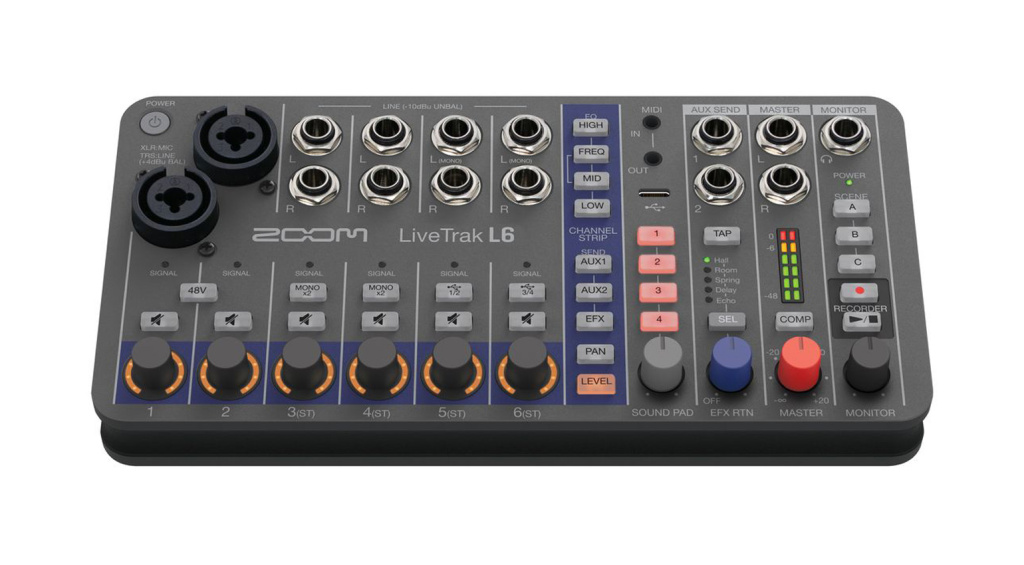
As a standalone device, the LiveTrak L6 can record up to 10 mono tracks and a stereo mix (with the built-in bus compressor) onto a microSD card at 32-bit 48 kHz. Also, the device can run on USB-C power, which includes portable power banks, or you can use four AA-size batteries.
In addition, the LiveTrak L6 has a set of four sound pads that also provide looping functionality, and there are three slots for recallable scenes. This means that you can save settings for your stream or podcast and access them quickly if you were using the L6 for other functions like music recording in the meantime. Get it at Thomann.*
- More from Zoom

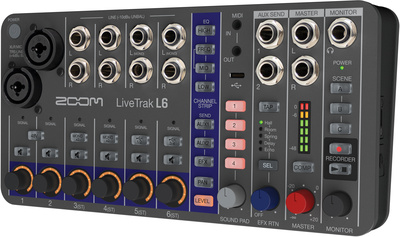
The Best Podcast Mixers: RODE RODECASTER PRO II
The RODECASTER PRO II is RODE’s flagship podcasting mixer/interface, and it’s packed to capacity with features for live production and audio management, as well as flexible connectivity. With the ability to connect up to two computers or mobile devices, it widens the scope of the value you can add to your stream or podcast with access to desktop and mobile apps.
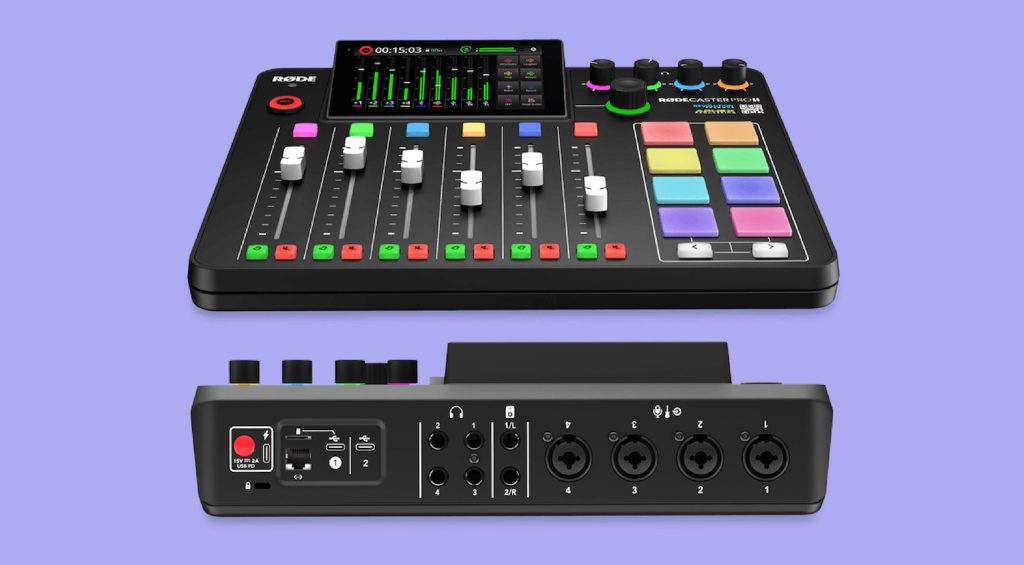
The internal mixer provides you with nine channels to insert audio signals from XLR, USB, and wireless mics, instruments, as well as sounds from your laptop, mobile device, or the RODECASTER PRO II itself. With the 8 SMART pads, you can flip between 8 banks of functions, allowing you to trigger sounds, send external MIDI messages, and trigger mixer actions like fades.
Although it may seem like a lot of machine at first, RODECASTER PRO II is relatively easy to navigate with its 5.5-inch HD touchscreen interface. What’s more, the overall signal quality with RODE’s Revolution mic preamps and the APHEX effects engine will ensure your podcast or stream sounds like a professional broadcast. Get it at Thomann.*

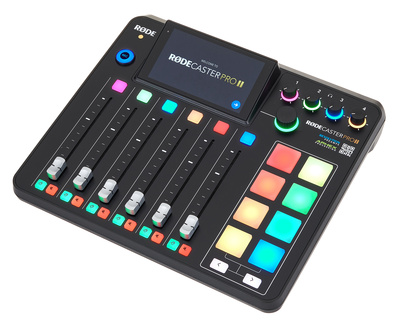

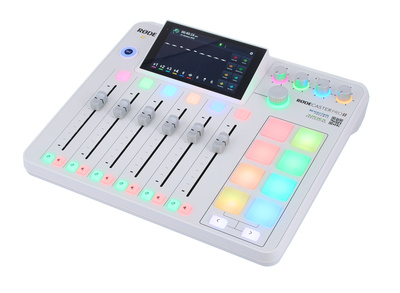

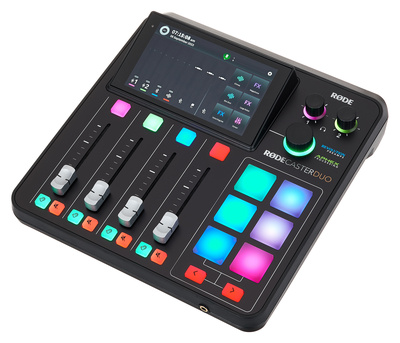

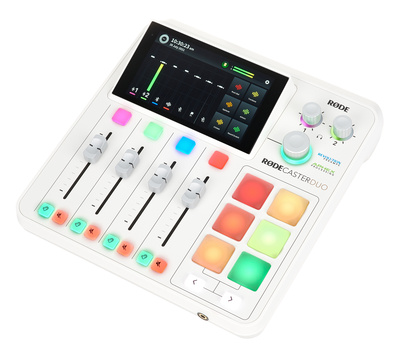
The Best Podcast Mixers: TASCAM Mixcast 4
The Mixcast 4 is TASCAM’s version of an all-in-one podcasting and streaming studio. With four microphone inputs and four individual headphone outputs, every host and guest gets their own recording and playback channel. There’s also a 3.5 mm jack for an external audio player or other device, and you can stream audio or calls directly from your phone via Bluetooth. A mix-minus feature ensures echo-free audio when recording calls via Bluetooth, USB, or the mini jack input.
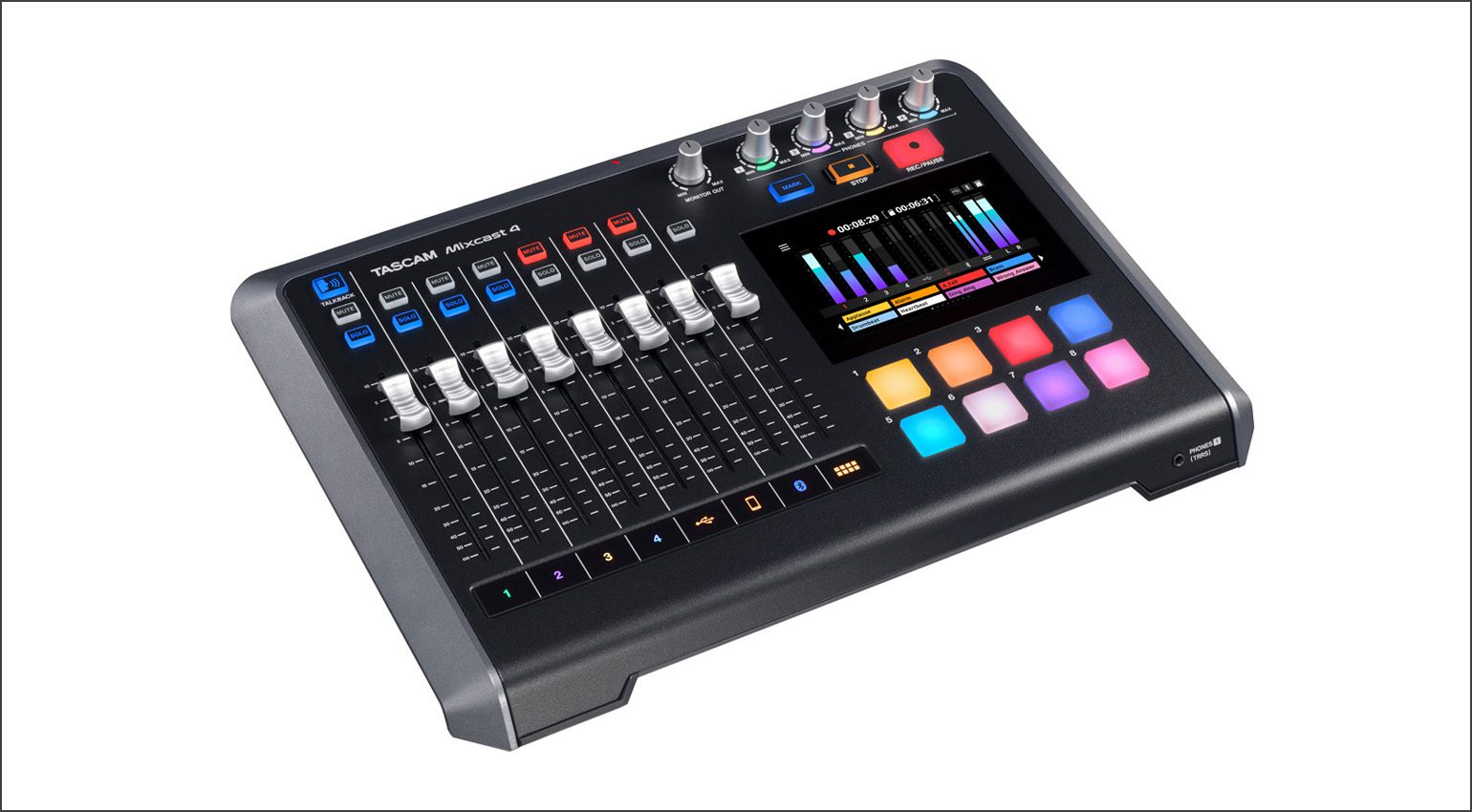
Everything is controlled by the eight faders and a 5-inch touch screen. For music beds or sound effects, the Tascam Mixcast 4 offers eight customizable sound pads. Use the preset effects or load or record your own sounds, and fire them at the push of a button. The pads can also be used to add effects like voice transformation or reverb.
The Mixcast 4 can be used as a mixer and audio interface to record on your computer (it even comes with Tascam’s own Podcast Editor software) or as a stand-alone recorder that records up to 14 tracks directly onto an SD card. It converts at 48 kHz and 24-bit. Get it at Thomann.*

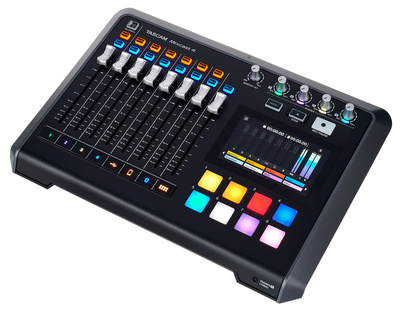
More about the Best Podcast Mixers:
- Our Podcast Mic Guide – choosing the microphone that’s right for you
- Getting Started with Vlogs Guide – taking your first steps
- Thomann’s Guide to Podcasting
*Note: This article contains affiliate links that help us fund our site. Don’t worry: the price for you always stays the same! If you buy something through these links, we will receive a small commission. Thank you for your support!

 3,9 / 5,0 |
3,9 / 5,0 | 